
I’ve been reading books (related to investing) since a long time.
Since a long-time. Even before I started analyzing stocks or reading annual reports or reading news!
And I haven’t quit. I’m not trying to toot my own horn here. I simply want to make a point.
Why haven’t I stopped reading investing books? After all, I’ve enough hacks to sustain profitably in the market.
Why do I keep at it? Reading books is a punishing work. It’s tough, and it takes a long time. Don’t I have better stuff to do like watching CNBC or scrolling moneycontrol or just relaxing?
Why am I so devoted to reading investing books? I’ll let you in on a secret. I actually love to read other successful investor’s mind. That’s the reason.
I got something new from every new book I read and I keep asking myself – “Heck! Sowmay, You was not aware of this amazing stuff”
There is much power in reading books on investing than anything you do to make yourself a decent investor.
I had already shared my experience on How I got insights of stock market by reading books since I was a child. You’ll enjoy reading it.
Before we go forward…
Remember, you need to make a habit of reading if you really want to stand in the stock market by your own. Every day in and day out, you need to read articles, annual reports, and most important, Investing Books to grab the mind of great Investors.
Look. Warren Buffett spends 80% of his day reading and he’s the most successful Investor of all time. So swear to god that you’ll spend more time on reading instead of following other’s advice.
Apart from Ebooks, I also have all the PDFs of Berkshire Hathaway Annual Letters. Even I have PDF files of Annual Reports of many companies. It’s a one stage device to boost up your reading habit.
That’s what I like about this device. Consider reading all the specification of this device from Amazon Kindle page.
Now let’s keep all this crap apart and concentrate on the sole purpose I’m here for.
To let you know the sequence for reading the books.
Sooner or later, all of us confronted the same situation. I once bought the book – “Intelligent Investor” but was unable to understand even a single chapter, long after I bought it. Everything I found seemed Technical.
Then I bought many books – some were awesome and some were not more than a crap.
Along with, I also create an understanding of proper sequence to read all the books.
Have you ever encountered the same awful feeling of not understanding a single sentence of any book?
If YES, then you’re not alone, all of us confronted the same situation, sooner or later.
Even I frequently receive emails, messages, comments for people asking any chronological sequence for reading Investing books (like the one below).
And Yes! I had already given an explanation on a previous article on 11 Books but summed it up in just 3 paragraphs 🙁
Here are that 3 Paragraphs –
As a beginner – Start your journey from Stocks to Riches. Read it thoroughly then switch to book by Prasenjit and CNBC TV 18. But don’t skip Stocks to riches. It’s a great read for beginners. However, you can skip other 2 if you’re clever enough to understand the concept from former.
After reading above books, start your luck with The Little Book That Still Beats the Market (by Greenblatt). It’s a great book to understand the analyze part of stocks. In other words, it will help you to choose stock by analyzing instead of investing on other’s recommendation. Give it a try.
As a professional – (It will be no bad if you read the above books) Assuming you’ve basic knowledge of the stock market, rest remaining books will be more than enough to understand every aspect that one should know before investing in stock market.
And here is the proof for “I’m not cooking stories” –
So I consider writing a dedicated post for just describing the sequence for reading the books.
Over the years, I’ve read many books myself. I’ve also helped thousands of people guiding them to read books, by themselves. I know what best sequence to follow and the mistakes to avoid.
I want to help you avoid misusing your time and immaterial money expenditure on books. A wise man said, and true are his words:
A penny saved is a penny gained.
Let’s start the journey.
Level #1
Beginners Investing Books for Brushing Up
Stocks to Riches: Insights on Investor Behaviour

(by Parag Parikh)
This books always remains on my radar, whenever somebody “who is nobody to stock market” asks me for any suggested book. This book is very helpful to the person who just entered the market and want to know about the stock market from the very basic.
The book covers many basic topics like the law of farm, capital benefits, dividend benefits, price change with no change in fundamentals, price rigging etc miscellaneous topics. At the end, he also has thrown light on the role of operator and explains how he wrecks up the prices of stocks and illustrates how the stock bubble is formed.
But if you already have more than basic knowledge about stock market, then this book is not for you.
Below is a news short from the time it was published:
Img – DNA news
It’s a “must read” book for the newbies. Let’s switch to next book in the row.
The 5 Rules for Successful Stock Investing
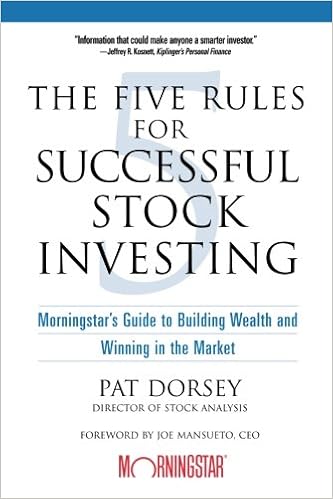
(by Pat Dorsey)
The Five Rules described in the book is more or less two part. The first half deals cover the analysis and second highlights the valuation of company. Remember, it might possible that the company is excellent when analysed but it doesn’t mean the company is available at a good valuation.
Pat Dorsey, Director of Stock Analysis, Morningstar Inc. in his very useful book – The 5 Rules for Successful Stock Investing – laying out the five rules for successful investing analysis basics as below and then proceeding to expand on each of them.
Let me not spoil the suspense and close this quick review with the statements of Motley Fools:
“Most investors routinely cite classic investing books like Ben Graham′s The Intelligent Investor as the place to start for novice investors. I respectfully disagree. I′ve read many of those great classics, but no one book has explained the details of the company and equity analysis as directly or relevantly as this book. This is one of the most overlooked investing books out there, and comes highly recommended to all investors”
It’s a great read.
The Little Book That Still Beats the Market
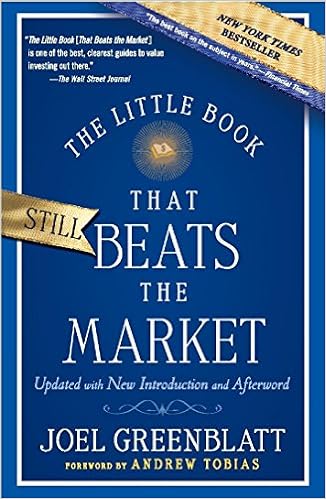
(by Joel Greenblatt)
It is probably the most simple and influential value investing book ever written. SmartMoney described it as “The book unquestionably makes good on its promises.”
He is also funny. I read this book quite 1 year ago and I can still remember how I was excited to read another page. I finish it up in just a couple of days. His sarcastic language made the book funny, easy and simple enough to understand value investing nerdy concepts.
This book will take readers on a step-by-step journey so that they can learn the principles of value investing in a way that will provide them with a long-term strategy that they can understand and stick with through both good and bad periods for the stock market.
It’s written in plain English and 6th-grade math to make it easy to follow along. This is the strong point of the Magic Formula theme.
In it’s most naked form, the Magic Formula is described by Greenblatt as:
A long-term investment strategy designed to help investors buy a group of above-average companies but only when they are available at below-average prices.
However, he wrote nothing new about value investing, he just followed Benjamin Graham but in a simple manner. Initially, Greenblatt wrote this book for his children who were aged between 6-15 at the time but the simplicity of the book made it all time best seller of New York Times with over 300,000 copies in print.
The Warren Buffett Way, +Website Book
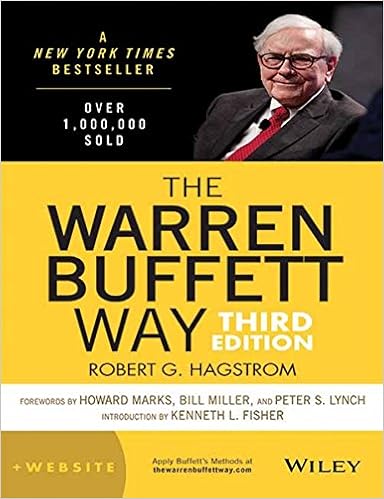
(by
I found this book long ago when I was digging out the concept of loss aversion (on Google Search) in stock market given by Warren Buffett. I read some paragraphs of the book on the topic and was more enough than satisfied from its explanation. It’s still on my reading list (aka I had not read this book until now) so I may not give a proper review of the book but consider reading the review outsourced from wiley.com:
The Warren Buffett Way gave investors their first in-depth look at the innovative investment and business strategies behind Buffett’s spectacular success. And, more importantly, it draws on the new field of behavioural finance to explain how investors can overcome the common obstacles that prevent them from investing like Buffett. It will also highlight the following aspects.
How to think like a long-term investor – just like Buffett
Why “loss aversion”, the tendency of most investors to overweight the pain of losing money, is one of the biggest obstacles that investors must overcome.
Why behaving rationally in the face of the ups and downs of the market has been the key to Buffett’s investing success
Analysis of Buffett’s recent acquisition of H.J. Heinz and his investment in IBM stock
It is easy to read and understand the points of the Warren Buffet way or style of investing. If you are not from a finance background then you might find some problem but just Google the term on the spot, helping to grow your knowledge bank further.
Level #2
Intermediate Investing Books to Push Your Learning Curve
The Little Book That Builds Wealth: The Knockout Formula for Finding Great Investments
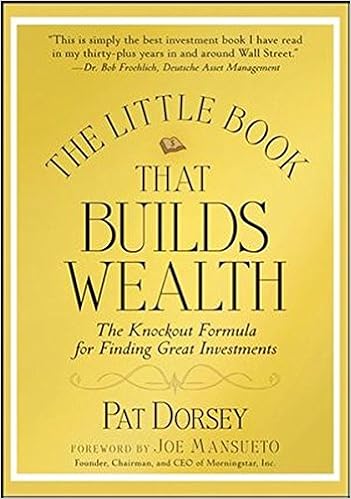
(by Pat Dorsey)
Another awesome book by Pat Dorsey after – The 5 Rules for Successful Stock Investing. This book reveals why competitive advantages, or economic moats, are such strong indicators of great long-term investments.
This book very well examines the 4 primary source of Moat companies:
- Intangible Assets (goodwill, patent etc)
- Cost advantages (cost margins)
- customer-switching costs (competitors, alternative products)
- Network economics (suppliers, customers, distributors, floats etc)
If you even have know a tinge about value investing then you can understand the importance of the above 4 elements to find long run enduring value stocks. And the book is far much better to lift you up from the very basic for finding hidden jewels.
A peek to its index is also enough to understand the subject matter of the book (have a look):
Introduction. The Game Plan.
Chapter 1. Economic Moats.
Chapter 2. Mistaken Moats
Chapter 3. Intangible Assets
Chapter 4. Switching Costs.
Chapter 5. The Network Effect.
Chapter 6. Cost Advantages.
Chapter 7. The Size Advantage.
Chapter 8. Eroding Moats.
Chapter 9. Finding Moats.
Chapter 10. The Big Boss.
Chapter 11. Where The Rubber Meets The Road.
Chapter 12. What’s A Moat Worth.
Chapter 13. Tools For Valuation.
Chapter 14. When To Sell.
Conclusion. More Than Numbers.
Warren Buffet is well known for picking companies with a high economic moat and this book can help you to understand how Mr. Buffett do that.
You Can Be a Stock Market Genius: Uncover the Secret Hiding Places of Stock Market Profits

(by Joel Greenblatt)
I also listed another book by Mr. Greenblatt in beginners level, here comes the book for intermediate level.
JOEL GREENBLATT is the founder of Gotham Capital, an investment partnership that achieved 40% annualized returns for the 20 years after its founding in 1985. He is a professor on the adjunct faculty of Columbia Business School, the Chief Strategist for Formula Investing, the former chairman of the board of a Fortune 500 company.
And Greenblatt firmly believes that individual investors have certain advantages that can help them outperform most professional money managers. That is, if they know where to look. Some of the advantages that he points out are:
- Individual investors can do focused investing, as opposed to having a portfolio of hundreds of stocks.
- Individual investors have longer timescales, their performance is not evaluated the next quarter.
- Afford to wait for special situations to pan out.
And this is also the sole reason why most of the fund managers fail to even beat the market averages. Greenblatt has shown a simple yet sensible way in this book to invest in the stock market like a genius.
Apart from this, he had also explained his treasure map to special situations in which big profits are possible like capital restructurings, merger securities, rights offerings, recapitalizations, arbitrage opportunity etc.
Financial Statements: A Step by Step Guide to Understanding and Creating Financial Reports
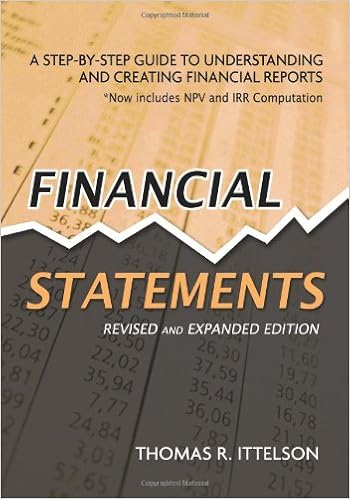
(by
A few months back, I receive an email from a newbie investor asking for any book on understanding financial statements. At that time, I was blank but soon after I found a good book on How to interpret financial statements.
(As I was a commerce student so got all of the financial statements insights from my 12th standard studies so this can be a good alternative. Find a 12th board commerce student nearer to your house and borrow the Accountancy part 2 book)
However, this book gone an extra mile and also explained how to interpret financial statements to form sensible investing decisions.
Generally, financial statements includes:
- Balance Sheet
- Profit and Loss
- Cash Flow Statement
And Financial Ratios is the end product which is calculated from above statements. Always remember, to form a good investing decision, you need to understand how to read the books. Once Warren Buffett said – “Accounting is the language of Business”.
The Little Book of Valuation: How to Value a Company, Pick a Stock and Profit

(by Aswath Damodaran)
The author is one of the today’s most respected valuation experts. This book can be a great guide for valuation for common investors, it not only uncover the truth about quickly valuing a company but also shows how to make sense out of other’s valuation reports.
I liked his 2 types of approach to valuation:
- Absolute
- Relative
This is something new you can find in this book. Here’s the core concept of the book – A company can be overvalued in absolute terms but may be possible that it is undervalued in relative terms.
For example, Infosys can be overvalued at some point of time but at the same time, it might be undervalued when compared to TCS or other companies.
So sometimes it good to buy absolutely overvalued stocks when its undervalued relatively. You can get an in-depth description of this 2 terms throughout the book. Consider reading it.
Somewhere in mid, it had also explained the terms of balance sheet, P&L etc in about 7-8 pages.
P.S. – I’m currently reading this book (as on 22 August).
Level #3
Advanced Investing Books for Professional Investors
The Dhandho Investor: The Low-Risk Value Method to High Returns

(by Mohnish Pabrai)
‘Dhandho’ is a Gujarati word that literally means endeavors that create wealth. Mr. Pabrai is a Gujarat originated value investor who manages Pabrai Investment Funds and, since 1999, has “delivered annualized returns of over 28% (net to investors).” With a track record like that, he’s worth listening to.
Long ago, I read an interview of Mohnish Pabrai where he talked about cloning strategy. He said that they keenly observe every move of Warren Buffet and accordingly carry their investments. It makes sure that they are just doing what the world’s most successful investor is doing.
Below are some core principles, you’ll get from the book:
- Focus on buying an existing business.
- Invest in distressed businesses.
- Few bets, big bets, and infrequent bets.
- Margin of safety – always.
- Invest in the copycats rather than the innovators.
- Invest in low-risk, high-uncertainty businesses.
- Fixate on arbitrage.
- Invest in business with durable moats.
- Invest in simple businesses.
In short, the formula is simple: Enter when the market is full of pessimism & exit when the market is full of optimism.
Common Stocks and Uncommon Profits and Other Writings
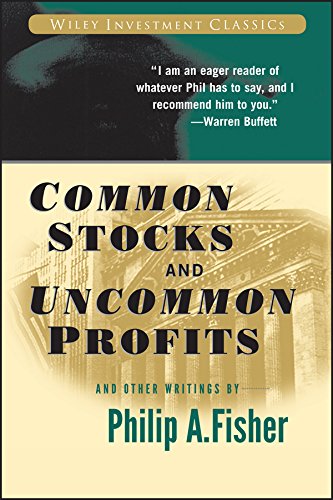
(by Philip A. Fisher)
If you recall, Buffett said that he is was “85% Graham and 15% Fisher”. Phil looked for growth stocks to hold forever. Ben Graham only emphasis on undervalued stock regardless of the growth but Phil went 1 step forward and also considered growth as prime parameters to analyze stocks.
Phil doesn’t emphasis on a lot of good investments instead a few outstanding ones.
The book also describes the 10 things that a value investor should not do ever like for example –
- buy into a promotional company that has no track record.
- buy a stock because they like the “tone” of the annual report
- quibble over eighths and quarters.
- OR *you not in the mood to buy the book* so let me not spill the suspense.
Here’s something good said by economic times about the book:
In the key chapter titled ‘What to buy’, Fisher elaborates upon the 15 questions that investors need to ask while vetting a stock. These relate to whether the company has products and services with adequate market potential to keep increasing its sales over the next several years, and if the management is serious about R&D to help it develop the next generation of products.
The validity of Fisher’s approach is borne out, among other famous investors, by his son, Kenneth L Fisher. While the father used scuttlebutt to run a small, but profitable, investment firm, the son scaled up the approach.
The Intelligent Investor

(by Benjamin Graham)
Warren Buffett appreciated the book by saying – “by far the best book on investing ever written”
The book has 20 chapters and each chapter is followed by commentary from Jason Zweig, a senior writer at Money magazine. Jason gives a more “updated” perspective on the chapter written by Benjamin Graham. He gives modern-day context to the Benjamin Graham excerpts.
2 chapters are highly recommended by Warren Buffett:
- Chapter 8 – The Investor and Market Fluctuations.
- Chapter 20 – Margin Of Safety.
And Yes! These 2 chapters pour out everything that an investor need to sustain the market at adversities.
Berkshire Hathaway Letters to Shareholders, 2015
![Berkshire Hathaway Letters to Shareholders, 2015 by [Buffett, Warren]](https://images-eu.ssl-images-amazon.com/images/I/41BLS%2BVM2IL.jpg)
(by Warren Buffett)
Indirectly, the author of this book is Warren Buffett but he was not intent to form a book but his collection of annual letters to shareholders is so much insightful that people gave it a form of a book. His letters are considered as a great source of information on value investing.
However, you can access his letters from his website here but buying the book itself have its own advantage:
- Collection of all 50 letters (average 20 pages each) at one place.
- Well formatted letters (which you can’t find on their website).
- You can access the highlighted statements in future.
It’s highly recommended to read this book and understand the mind of most successful Investor of the century.
Wrapping it up
This is the sequence of the book based on my long time experience. However, framing the proper sequence depends on you. Analyze your situation – how much knowledge do you pertain? & then find the perfect book that matches your understanding level.
Sure, you might not be the next Warren Buffett, but that doesn’t mean that you can’t fill up your portfolios with great stocks that drive in enormous returns. Just don’t lose hope.
If you miss something, here’s the quick summary of the list of the books:
BEGINNERS
- Stocks to Riches: Insights on Investor Behaviour
- The 5 Rules for Successful Stock Investing
- The Little Book That Still Beats the Market
- The Warren Buffett Way, +Website Book
INTERMEDIATE
- The Little Book That Builds Wealth: The Knockout Formula for Finding Great Investments
- You Can Be a Stock Market Genius: Uncover the Secret Hiding Places of Stock Market Profits
- Financial Statements: A Step by Step Guide to Understanding and Creating Financial Reports
- The Little Book of Valuation: How to Value a Company, Pick a Stock and Profit
ADVANCED
- The Dhandho Investor: The Low-Risk Value Method to High Returns
- Common Stocks and Uncommon Profits and Other Writings
- The Intelligent Investor
- Berkshire Hathaway Letters to Shareholders (from 1965 to 2015)